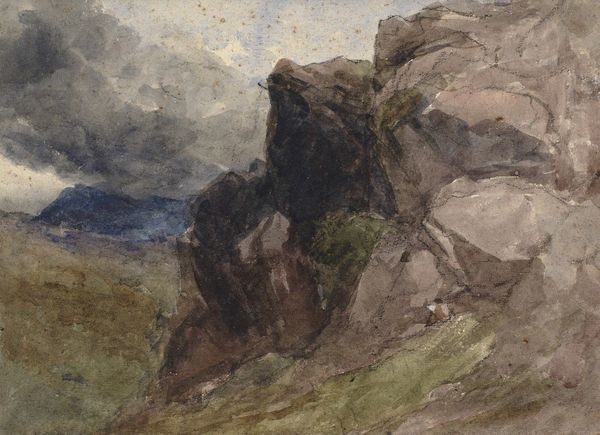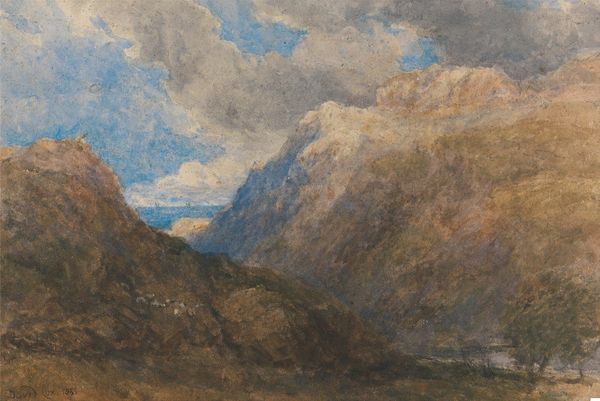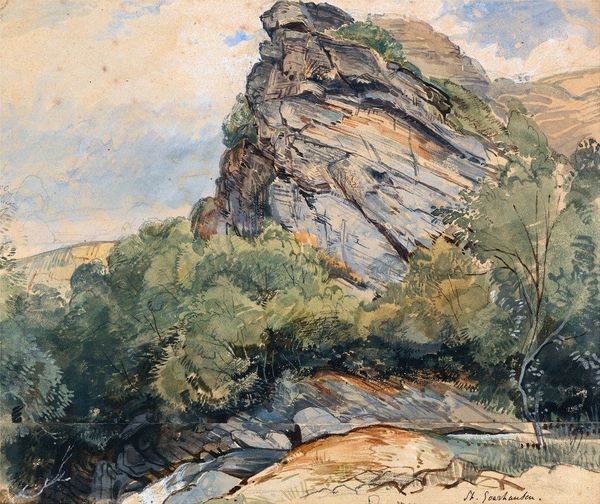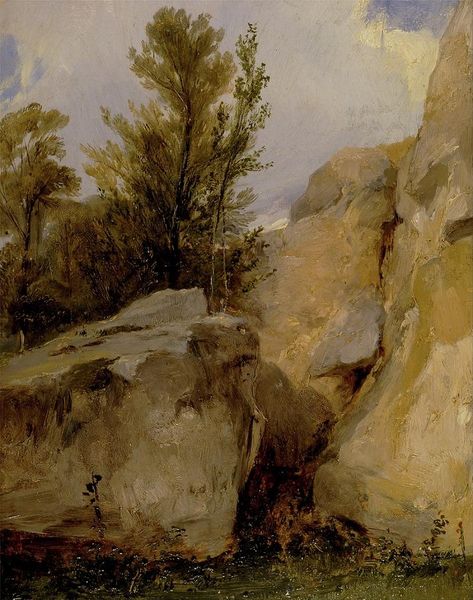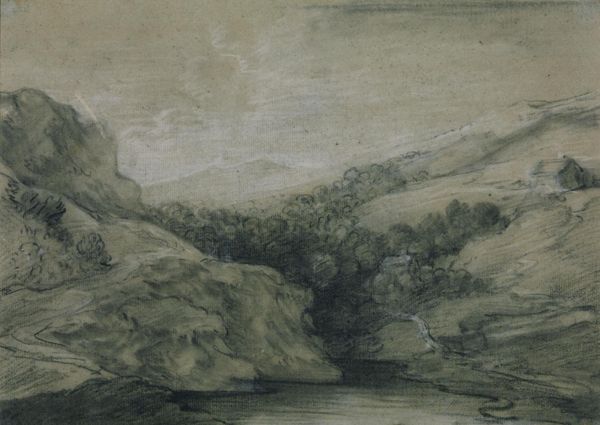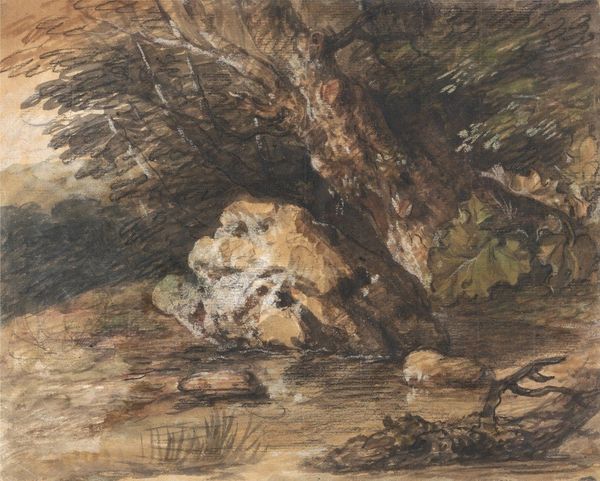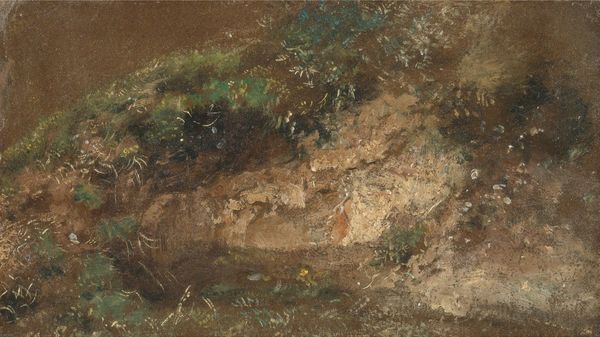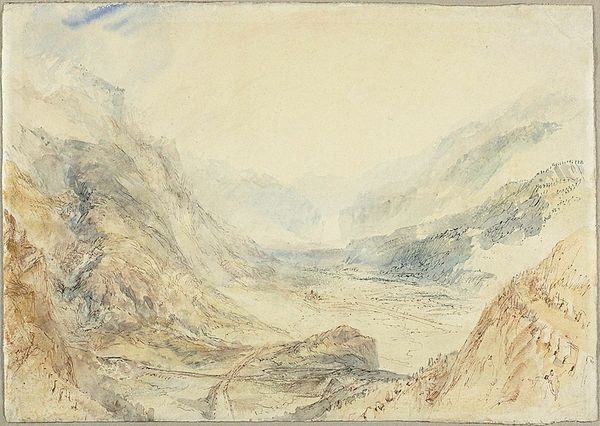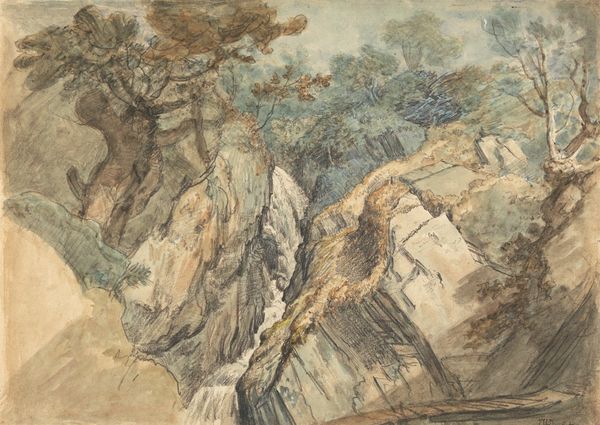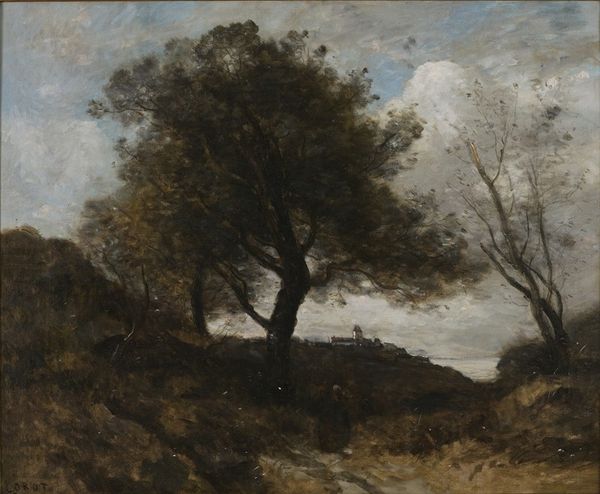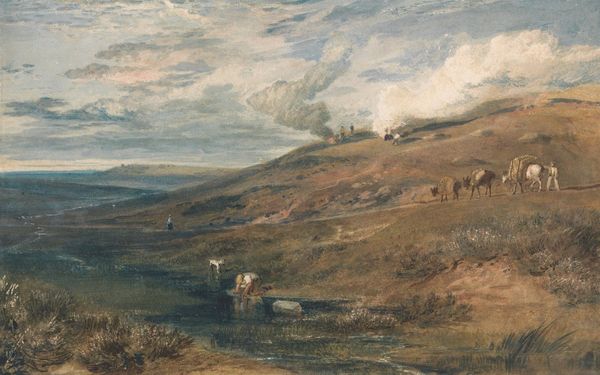
drawing, watercolor
#
drawing
#
landscape
#
watercolor
#
romanticism
#
watercolor
Copyright: Public Domain: Artvee
Editor: So, here we have David Cox's watercolor and chalk drawing, "Driving Sheep in a Rocky Landscape," created around 1846. It feels really brooding, almost… foreboding. The rocks seem to loom, don't they? What do you make of it? Curator: I’m immediately drawn to the shepherd. He’s not merely a figure in a landscape, he’s more a timeless symbol. Do you see how small he is, almost swallowed by the immense, craggy rocks? The rock face could evoke, perhaps, the challenges of life, a journey, while the flock… well, what do sheep usually signify? Editor: Maybe guidance or innocence? The way he's positioned, it makes me wonder if he even *knows* where he's going! Curator: Precisely. The image resonates with ancient themes, consider for instance the "Good Shepherd" motif in early Christian art. Cox might not be overtly religious here, but he’s tapping into something deeply rooted in our collective consciousness. Do you see how the Romantic painters would use nature not just as a setting, but as an active participant in human destiny? Editor: That’s fascinating. So the landscape isn’t just *there,* it's part of the story itself, imbued with its own meaning? It’s almost as if the rocks themselves are watching, guarding something. Curator: Exactly. The use of watercolor, here, isn’t simply representational, it adds to the overall mood of transience, almost a dreamscape. These visual symbols communicate a deeper narrative, a human connection to a powerful, enduring landscape. Editor: I hadn't thought of it that way. I was focused on the mood, but understanding the symbolism adds so many layers. Curator: Indeed. By understanding this symbolic language, we see continuity in art and human expression that transcends time.
Comments
No comments
Be the first to comment and join the conversation on the ultimate creative platform.

